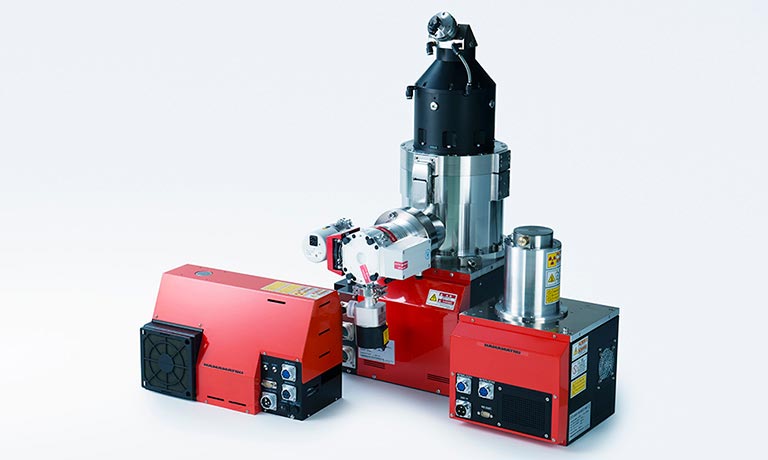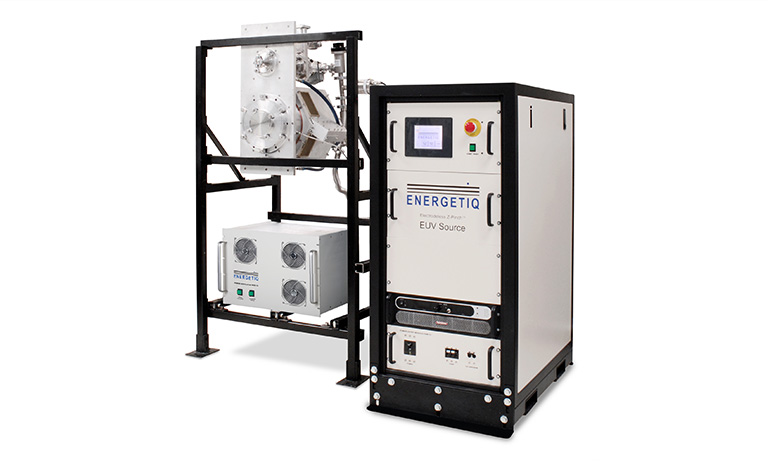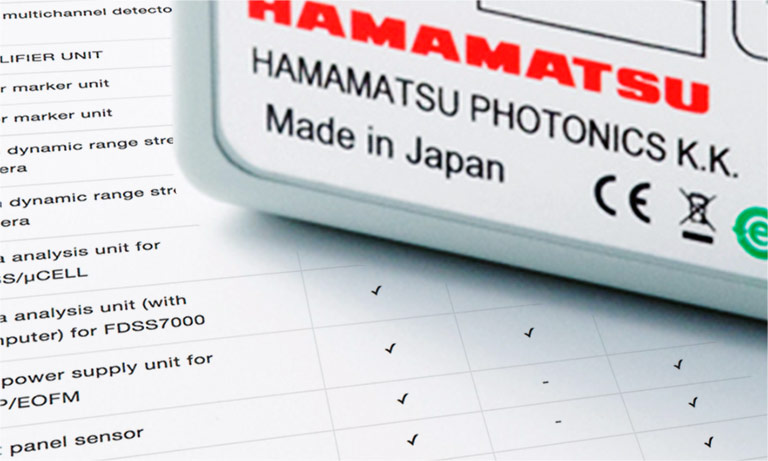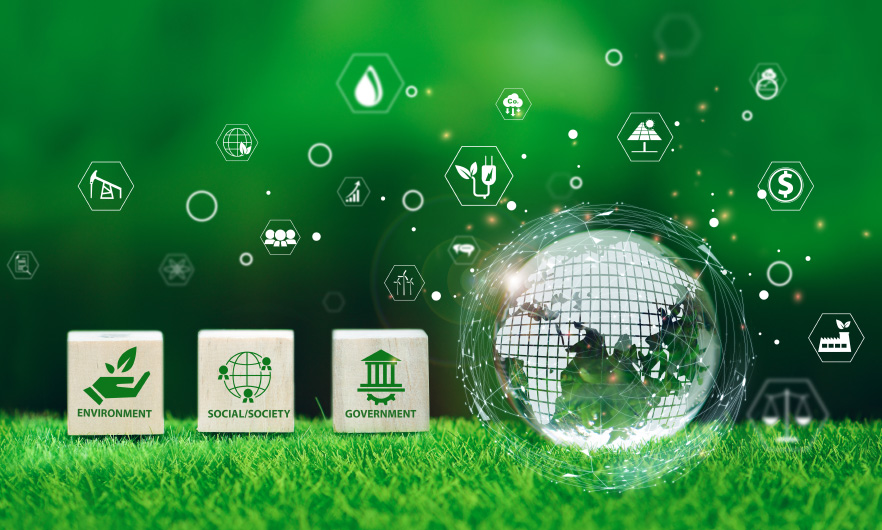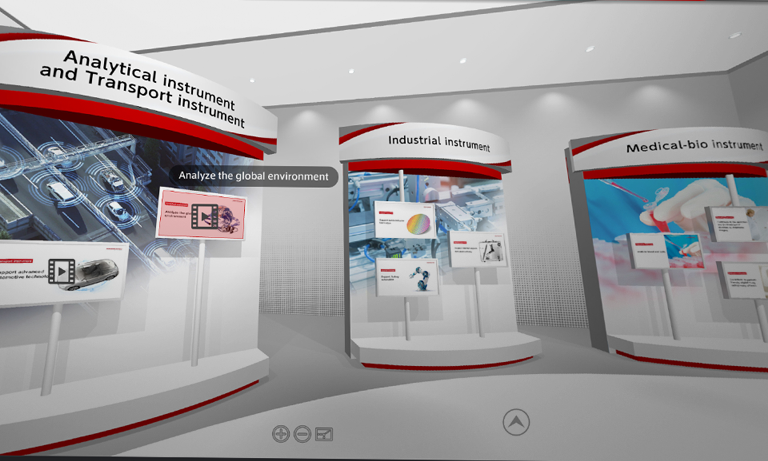United Kingdom (EN)
Select your region or country.
Guidelines
GRI standard comparative tabale
| GRI 2: General Disclosures 2021 | References | |
|---|---|---|
| The organization and its reporting practices | ||
| 2-1 | Organizational details | Corporate profile Global organizations Integrated report |
| 2-2 | Entities included in the organization’s sustainability reporting | Integrated report |
| 2-3 | Reporting period, frequency and contact point | Integrated report |
| 2-4 | Restatements of information | - |
| 2-5 | External assurance | - |
| Activities and workers | ||
| 2-6 | Activities, value chain and other business relationships | Business domain Supply chain |
| 2-7 | Employees | ESG data: Social |
| 2-8 | Workers who are not employees | ESG data: Social |
| Governance | ||
| 2-9 | Governance structure and composition | Corporate governance Corporate governance report |
| 2-10 | Nomination and selection of the highest governance body | Corporate governance Directors |
| 2-11 | Chair of the highest governance body | Corporate governance Corporate governance report |
| 2-12 | Role of the highest governance body in overseeing the management of impacts | Sustainability promotion structure Materiality |
| 2-13 | Delegation of responsibility for managing impacts | Sustainability promotion structure Environmental management |
| 2-14 | Role of the highest governance body in sustainability reporting | Sustainability promotion structure |
| 2-15 | Conflicts of interest | Corporate governance Corporate governance report |
| 2-16 | Communication of critical concerns | Corporate governance Legal and corporate compliance |
| 2-17 | Collective knowledge of the highest governance body | Corporate governance |
| 2-18 | Evaluation of the performance of the highest governance body | Corporate governance Corporate governance report |
| 2-19 | Remuneration policies | Corporate governance Corporate governance report |
| 2-20 | Process to determine remuneration | Corporate governance |
| 2-21 | Annual total compensation ratio | - |
| Strategy, policies and practices | ||
| 2-22 | Statement on sustainable development strategy | Integrated report |
| 2-23 | Policy commitments | Basic Policy of Sustainability |
| 2-24 | Embedding policy commitments | Each activity in Sustainability page |
| 2-25 | Processes to remediate negative impacts | Legal and corporate compliance Supply chain |
| 2-26 | Mechanisms for seeking advice and raising concerns | Legal and corporate compliance |
| 2-27 | Compliance with laws and regulations | Legal and corporate compliance |
| 2-28 | Membership associations | Disclosure based on TCFD Recommendations Reducing carbon emissions and climate change |
| Stakeholder engagement | ||
| 2-29 | Approach to stakeholder engagement | Integrated report |
| 2-30 | Collective bargaining agreements | Working conditions ESG data: Social |
| GRI 3: Material Topics 2021 | References | |
|---|---|---|
| Disclosures on material topics | ||
| 3-1 | Process to determine material topics | Materiality identification process |
| 3-2 | List of material topics | Materiality |
| 3-3 | Management of material topics | - |
Topic-specific Standards
| GRIStandards(Economic) | References | |
|---|---|---|
| GRI201: Economic Performance 2016 | ||
| 201-1 | Direct economic value generated and distributed | Social contribution |
| 201-2 | Financial implications and other risks and opportunities due to climate change | Disclosure based on TCFD Recommendations Reducing carbon emissions and climate change |
| 201-3 | Defined benefit plan obligations and other retirement plans | |
| 201-4 | Financial assistance from government | - |
| GRI202: Market Presence 2016 | ||
| 202-1 | Ratios of standard entry level wage by gender compared to local minimum wage | - |
| 202-2 | Proportion of senior management hired from the local community | - |
| GRI203: Indirect Economic Impacts 2016 | ||
| 203-1 | Infrastructure investments and services supported | Social contribution Environmental communication activities |
| 203-2 | Significant indirect economic impacts | - |
| GRI204: Procurement Practices 2016 | ||
| 204-1 | Proportion of spending on local suppliers | - |
| GRI205: Anti-corruption 2016 | ||
| 205-1 | Operations assessed for risks related to corruption | - |
| 205-2 | Communication and training about anti-corruption policies and procedures | Basic approach to corporate ethics and compliance Legal and corporate compliance Hamamatsu Photonics Group Code of Conduct |
| 205-3 | Confirmed incidents of corruption and actions taken | Legal and corporate compliance, Preventing corruption(Not applicable) |
| GRI206: Anti-competitive Behavior 2016 | ||
| 206-1 | Legal actions for anti-competitive behavior, anti-trust, and monopoly practices | Legal and corporate compliance, Anti-competitive practices(Not applicable) |
| GRI207: Tax 2019 | ||
| 207-1 | Approach to tax | Legal and corporate compliance, Transparency regarding |
| 207-2 | Tax governance, control, and risk management | - |
| 207-3 | Stakeholder engagement and management of concerns related to tax | - |
| 207-4 | Country-by-country reporting | - |
| GRI standard (Social) | References | |
|---|---|---|
| GRI401: Employment 2016 | ||
| 401-1 | New employee hires and employee turnover | ESG data: Social (Number of newly hired employees, Turnover rate) |
| 401-2 | Benefits provided to full-time employees that are not provided to temporary or part-time employees | - |
| 401-3 | Parental leave | Working conditions Measures to enable continuing employment: combining work with childcare or nursing care ESG data: Social |
| GRI402: Labor/Management Relations 2016 | ||
| 402-1 | Minimum notice periods regarding operational changes | - |
| GRI403: Occupational Health and Safety 2018 | ||
| 403-1 | Occupational health and safety management system | Occupational health and safety |
| 403-2 | Hazard identification, risk assessment, and incident investigation | - |
| 403-3 | Occupational health services | - |
| 403-4 | Worker participation, consultation, and communication on occupational health and safety | - |
| 403-5 | Worker training on occupational health and safety | - |
| 403-6 | Promotion of worker health | Health management |
| 403-7 | Prevention and mitigation of occupational health and safety impacts directly linked by business relationships | - |
| 403-8 | Workers covered by an occupational health and safety management system | - |
| 403-9 | Work-related injuries | Occupational health and safety ESG data: Social |
| 403-10 | Work-related ill health | Occupational health and safety ESG data: Social |
| GRI404: Training and Education 2016 | ||
| 404-1 | Average hours of training per year per employee | - |
| 404-2 | Programs for upgrading employee skills and transition assistance programs | Acquisition and development of human resources |
| 404-3 | Percentage of employees receiving regular performance and career development reviews | - |
| GRI405: Diversity and Equal Opportunity 2016 | ||
| 405-1 | Diversity of governance bodies and employee | Respect for human rights and diversity ESG data |
| 405-2 | Ratio of basic salary and remuneration of women to men | ESG data: Social |
| GRI406: Non-discrimination 2016 | ||
| 406-1 | Incidents of discrimination and corrective actions taken | - |
| GRI407: Freedom of Association and Collective Bargaining 2016 | ||
| 407-1 | Operations and suppliers in which the freedom of association and collective bargaining may be at risk | - |
| GRI408: Child Labor 2016 | ||
| 408-1 | Operations and suppliers at significant risk for incidents of child labor | - |
| GRI409: Forced or Compulsory Labor 2016 | ||
| 409-1 | Operations and suppliers at significant risk for incidents of forced or compulsory labor | - |
| GRI410: Security Practices 2016 | ||
| 410-1 | Security personnel trained in human rights policies or procedures | - |
| GRI411: Rights of Indigenous Peoples 2016 | ||
| 411-1 | Incidents of violations involving rights of indigenous peoples | - |
| GRI 412: Human Rights Assessment 2016 | ||
| 412-1 | Operations that have been subject to human rights reviews or impact assessments | - |
| 412-2 | Employee training on human rights policies or procedures | - |
| 412-3 | Significant investment agreements and contracts that include human rights clauses or that underwent human rights screening | - |
| GRI413: Local Communities 2016 | ||
| 413-1 | Operations with local community engagement, impact assessments, and development programs | Social contribution Environmental communication activities |
| 413-2 | Operations with significant actual and potential negative impacts on local communities | - |
| GRI414: Supplier Social Assessment 2016 | ||
| 414-1 | New suppliers that were screened using social criteria | - |
| 414-2 | Negative social impacts in the supply chain and actions taken | - |
| GRI415: Public Policy 2016 | ||
| 415-1 | Political contributions | - |
| GRI416: Customer Health and Safety 2016 | ||
| 416-1 | Assessment of the health and safety impacts of product and service categories | Quality control |
| 416-2 | Incidents of non-compliance concerning the health and safety impacts and services | Not appicable |
| GRI417: Marketing and Labeling 2016 | ||
| 417-1 | Requirements for product and service information and labeling | Quality control |
| 417-2 | Incidents of non-compliance concerning product and service information and labeling | Not appicable |
| 417-3 | Incidents of non-compliance concerning marketing communications | Not appicable |
| GRI418: Customer Privacy 2016 | ||
| 418-1 | Substantiated complaints concerning breeches of customer privacy and losses of customer data | - |
| GRI 419: Socioeconomic Compliance 2016 | ||
| 419-1 | Non-compliance with laws and regulations in the social and economic area | Legal and corporate compliance |
SASB standard comparative table
Our comparative table is based on the standards for "Electrical & Electronic Equipment" industry in the Resource Transformation sector.
| Topic | Metric | Category | Unit of measure | Code | References |
|---|---|---|---|---|---|
| Energy Management | (1) Total energy consumed, (2) percentage grid electricity and (3) percentage renewable | Quantitative | Gigajoules (GJ) Percentage (%) |
RT-EE-130a.1 | (1) 2023: 35,910kl ※Total energy consumption is disclosed in kl. (3) 2023: 96.3 % ESG data: Environment |
| Hazardous Waste Management | (1) Amount of hazardous waste generated, (2) percentage recycled | Quantitative | Metric tonnes (t) Percentage (%) |
RT-EE-150a.1 | (1) 2023: 402t (2) 2023: 77.4 % ESG data: Environment |
| (1) Number and aggregate quantity of reportable spills, (2) quantity recovered | Quantitative | Number, Kilogrammes (kg) | RT-EE-150a.2 | Non applicable |
|
| Product Safety | (1) Number of recalls issued, (2) total units recalled | Quantitative | Number | RT-EE-250a.1 | - |
| Total amount of monetary losses as a result of legal proceedings associated with product safety | Quantitative | Presentation currency | RT-EE-250a.2 | - | |
| Product Lifecycle Management | Percentage of products by revenue that contain IEC 62474 declarable substances | Quantitative | Percentage (%) by revenue | RT-EE-410a.1 | - |
| Percentage of eligible products, by revenue, certified to an energy efficiency certification | Quantitative | Percentage (%) by revenue | RT-EE-410a.2 | - | |
| Revenue from renewable energy-related and energy efficiency-related products | Quantitative | Presentation currency | RT-EE-410a.3 | - | |
| Materials Sourcing | Description of the management of risks associated with the use of critical materials | Discussion and Analysis | n/a | RT-EE-440a.1 | Responsible Minerals Sourcing |
| Business Ethics | Description of policies and practices for prevention of: (1) corruption and bribery and (2) anti-competitive behaviour | Discussion and Analysis | n/a | RT-EE-510a.1 | (1)One of the Company’s key commitments to stakeholders is the prevention of bribery and other corruption. This pledge is at the very heart of our business, as we signaled to the world in August 2017 when we signed the United Nations Global Compact (UNGC). To advance its efforts to prevent corruption, Hamamatsu Photonics has completed preparation of in-house regulations to prevent corruption at overseas subsidiaries. |
| Total amount of monetary losses as a result of legal proceedings associated with bribery or corruption | Quantitative | Presentation currency | RT-EE-510a.2 | In FY2023, no violations of or sanctions against Hamamatsu Photonics or its subsidiaries occurred with respect to bribery. Legal and corporate compliance |
|
| Total amount of monetary losses as a result of legal proceedings associated with anti-competitive behaviour regulations | Quantitative | Presentation currency | RT-EE-510a.3 | In FY2023, no legal actions were taken against Hamamatsu Photonics in connection with any anti-competitive action, antitrust case or monopolistic behavior. Legal and corporate compliance |
| Activity Metrics | Activity Metrics | Category | Unit of measure | Code | References |
|---|---|---|---|---|---|
| Number of units produced by product category | Quantitative | Number | RT-EE-000.A | - | |
| Number of employees | Quantitative | Number | RT-EE-000.B | ESG data: Social (Number of employees) |
- Confirmation
-
It looks like you're in the . If this is not your location, please select the correct region or country below.
You're headed to Hamamatsu Photonics website for GB (English). If you want to view an other country's site, the optimized information will be provided by selecting options below.
In order to use this website comfortably, we use cookies. For cookie details please see our cookie policy.
- Cookie Policy
-
This website or its third-party tools use cookies, which are necessary to its functioning and required to achieve the purposes illustrated in this cookie policy. By closing the cookie warning banner, scrolling the page, clicking a link or continuing to browse otherwise, you agree to the use of cookies.
Hamamatsu uses cookies in order to enhance your experience on our website and ensure that our website functions.
You can visit this page at any time to learn more about cookies, get the most up to date information on how we use cookies and manage your cookie settings. We will not use cookies for any purpose other than the ones stated, but please note that we reserve the right to update our cookies.
1. What are cookies?
For modern websites to work according to visitor’s expectations, they need to collect certain basic information about visitors. To do this, a site will create small text files which are placed on visitor’s devices (computer or mobile) - these files are known as cookies when you access a website. Cookies are used in order to make websites function and work efficiently. Cookies are uniquely assigned to each visitor and can only be read by a web server in the domain that issued the cookie to the visitor. Cookies cannot be used to run programs or deliver viruses to a visitor’s device.
Cookies do various jobs which make the visitor’s experience of the internet much smoother and more interactive. For instance, cookies are used to remember the visitor’s preferences on sites they visit often, to remember language preference and to help navigate between pages more efficiently. Much, though not all, of the data collected is anonymous, though some of it is designed to detect browsing patterns and approximate geographical location to improve the visitor experience.
Certain type of cookies may require the data subject’s consent before storing them on the computer.
2. What are the different types of cookies?
This website uses two types of cookies:
- First party cookies. For our website, the first party cookies are controlled and maintained by Hamamatsu. No other parties have access to these cookies.
- Third party cookies. These cookies are implemented by organizations outside Hamamatsu. We do not have access to the data in these cookies, but we use these cookies to improve the overall website experience.
3. How do we use cookies?
This website uses cookies for following purposes:
- Certain cookies are necessary for our website to function. These are strictly necessary cookies and are required to enable website access, support navigation or provide relevant content. These cookies direct you to the correct region or country, and support security and ecommerce. Strictly necessary cookies also enforce your privacy preferences. Without these strictly necessary cookies, much of our website will not function.
- Analytics cookies are used to track website usage. This data enables us to improve our website usability, performance and website administration. In our analytics cookies, we do not store any personal identifying information.
- Functionality cookies. These are used to recognize you when you return to our website. This enables us to personalize our content for you, greet you by name and remember your preferences (for example, your choice of language or region).
- These cookies record your visit to our website, the pages you have visited and the links you have followed. We will use this information to make our website and the advertising displayed on it more relevant to your interests. We may also share this information with third parties for this purpose.
Cookies help us help you. Through the use of cookies, we learn what is important to our visitors and we develop and enhance website content and functionality to support your experience. Much of our website can be accessed if cookies are disabled, however certain website functions may not work. And, we believe your current and future visits will be enhanced if cookies are enabled.
4. Which cookies do we use?
There are two ways to manage cookie preferences.
- You can set your cookie preferences on your device or in your browser.
- You can set your cookie preferences at the website level.
If you don’t want to receive cookies, you can modify your browser so that it notifies you when cookies are sent to it or you can refuse cookies altogether. You can also delete cookies that have already been set.
If you wish to restrict or block web browser cookies which are set on your device then you can do this through your browser settings; the Help function within your browser should tell you how. Alternatively, you may wish to visit www.aboutcookies.org, which contains comprehensive information on how to do this on a wide variety of desktop browsers.
5. What are Internet tags and how do we use them with cookies?
Occasionally, we may use internet tags (also known as action tags, single-pixel GIFs, clear GIFs, invisible GIFs and 1-by-1 GIFs) at this site and may deploy these tags/cookies through a third-party advertising partner or a web analytical service partner which may be located and store the respective information (including your IP-address) in a foreign country. These tags/cookies are placed on both online advertisements that bring users to this site and on different pages of this site. We use this technology to measure the visitors' responses to our sites and the effectiveness of our advertising campaigns (including how many times a page is opened and which information is consulted) as well as to evaluate your use of this website. The third-party partner or the web analytical service partner may be able to collect data about visitors to our and other sites because of these internet tags/cookies, may compose reports regarding the website’s activity for us and may provide further services which are related to the use of the website and the internet. They may provide such information to other parties if there is a legal requirement that they do so, or if they hire the other parties to process information on their behalf.
If you would like more information about web tags and cookies associated with on-line advertising or to opt-out of third-party collection of this information, please visit the Network Advertising Initiative website http://www.networkadvertising.org.
6. Analytics and Advertisement Cookies
We use third-party cookies (such as Google Analytics) to track visitors on our website, to get reports about how visitors use the website and to inform, optimize and serve ads based on someone's past visits to our website.
You may opt-out of Google Analytics cookies by the websites provided by Google:
https://tools.google.com/dlpage/gaoptout?hl=en
As provided in this Privacy Policy (Article 5), you can learn more about opt-out cookies by the website provided by Network Advertising Initiative:
http://www.networkadvertising.org
We inform you that in such case you will not be able to wholly use all functions of our website.
Close








































